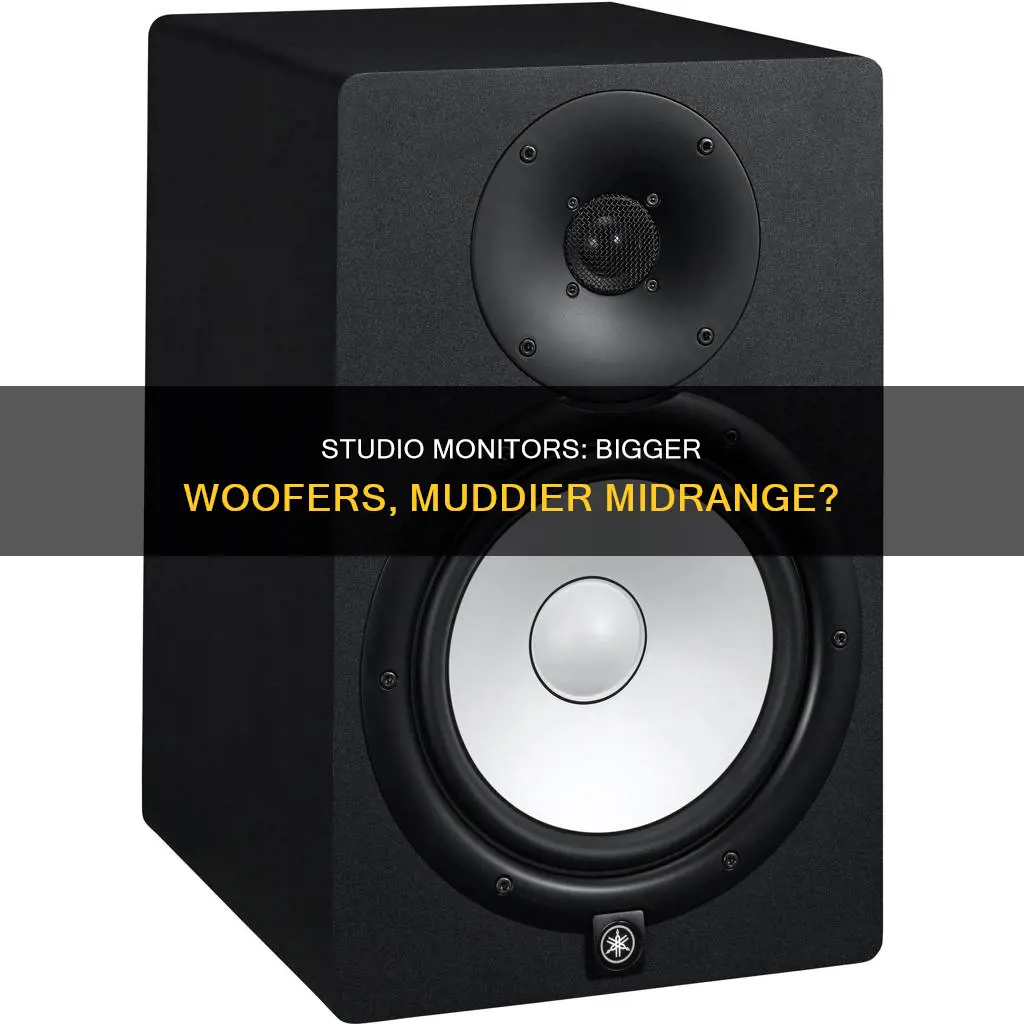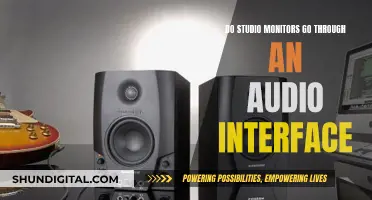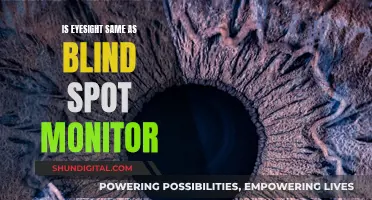
Studio monitors are an essential component of the mixing process, allowing producers to hear their tracks in intricate detail and make informed decisions when applying EQ, compression, and other sound manipulation techniques. When choosing studio monitors, it is crucial to consider the size of the woofer, which can impact the sound quality and frequency response.
An 8-inch woofer, like the Dynaudio Lyd 8, offers a deeper bass response and can dig lower in the frequency spectrum. This makes it suitable for genres that rely heavily on bass, such as hip-hop or orchestral music. It also has a higher sound pressure level (SPL) due to its larger cone area, allowing for more powerful sound reproduction and making it ideal for louder mixing sessions or larger rooms. However, 8-inch woofers tend to have a bulkier design and may struggle with transient detail, resulting in a less defined low end.
On the other hand, 7-inch woofers, like the Hedd Type 07, provide tighter bass as the smaller woofer can move faster. This results in a more precise and punchier low-end response, making it ideal for electronic music where a clean and defined bass is essential. 7-inch woofers also offer improved midrange clarity since less cone area is dedicated to bass reproduction. Additionally, studio monitors with 7-inch woofers tend to have a more compact design, making them suitable for smaller home studios.
When deciding between 7-inch and 8-inch woofers for studio monitors, it is important to consider the specific needs and preferences. If you have a small home studio, prioritise precise bass and clear mids, and work primarily with electronic music or genres that don't require a deep low end, then a 7-inch woofer is a better choice. On the other hand, if you need deeper bass, mix at high volumes, have a larger room, or want a more versatile monitor for a wider range of music styles, an 8-inch woofer is more suitable.
| Characteristics | Values |
|---|---|
| Monitor model | Yamaha HS8, ADAM Audio T8V, KRK Rokit 8 G5, Genelec 8050B, Kali Audio IN-8 V2, PreSonus Eris Pro 8, Tannoy GOLD 8, Dynaudio LYD 8, PreSonus Eris Studio 8, JBL 308P MkII, Focal Audio ALPHA 80 Evo, RCF AYRA PRO8, Pioneer VM-80, Mackie MR824, Samson Resolv SE8 |
| Monitor size | 8-inch |
| Midrange frequencies | Not explicitly mentioned, but the monitors have a frequency response range that includes midrange frequencies |
| Volume | Studio monitors are designed for clarity and flat frequency response rather than high volume |
| Room size | 8-inch monitors are recommended for rooms of at least 25 square meters or larger |
What You'll Learn
- Studio monitors with 8 woofers can offer a more natural and full-bodied sound
- They are suitable for louder mixing sessions or larger rooms
- They are more versatile and can handle a broader range of music genres
- Studio monitors with 8 woofers can cause issues with transient detail
- They require more space on your workstation

Studio monitors with 8 woofers can offer a more natural and full-bodied sound
Studio monitors with 8-inch woofers can offer a more natural and full-bodied sound, providing a range of benefits for music producers and audio engineers.
Firstly, 8-inch monitors deliver deeper low-end frequencies and louder volume levels compared to smaller speakers. This extra depth and volume can enhance the listening experience, making it more immersive and revealing new details in the music. The ability to play louder with less distortion at higher volumes is especially advantageous for producers who need to work with bass-heavy music or who simply prefer to crank up the volume while working.
Secondly, the larger cone size of 8-inch woofers provides a broader sweet spot, making these monitors ideal for both studio use and general listening. A larger sweet spot means that the sound quality remains consistent across a wider area, providing flexibility in speaker placement and listening positions. This feature is particularly useful for DJs or those who intend to use their monitors for small gatherings.
Additionally, 8-inch studio monitors offer improved bass delivery, although this can also lead to excess vibrations on your desk or studio furniture. This issue can be mitigated by investing in isolation pads or stands to reduce vibrations and resonance.
When choosing between different sizes of studio monitors, it's essential to consider the size and shape of your room. While 8-inch monitors are often considered too big for most home setups, they can be a good choice if you have the space and want to feel the bass accurately. For smaller rooms, 5-inch or 6-inch monitors might be more suitable, as they can provide clearer low-end frequencies without taking up too much physical space.
In conclusion, 8-inch studio monitors can indeed offer a more natural and full-bodied sound, making them a preferred choice for many professionals. However, the specific needs of your workspace and listening requirements should always be taken into account when making a decision.
Monitor Size Guide: 16 x 10 Proportions Explained
You may want to see also

They are suitable for louder mixing sessions or larger rooms
Studio monitors with 8-inch woofers are suitable for louder mixing sessions or larger rooms. The larger cone area of 8-inch woofers allows for more powerful sound reproduction, making them well-suited for higher volume levels or bigger spaces. This advantage in sound pressure level (SPL) means they can fill larger rooms with sound more effectively than smaller woofers.
The decision between 7-inch and 8-inch woofers depends on specific needs and preferences. If you require deeper bass for genres like hip-hop or orchestral music, mix at high volumes, or have a larger room, an 8-inch woofer is the better choice. On the other hand, if you prioritise precise bass and clear mids, work with electronic music, or have a small home studio, a 7-inch woofer might be more suitable.
It's worth noting that the size of the woofer alone doesn't determine the overall sound quality. Other factors, such as driver quality, amplifier power, and speaker placement, also play a significant role in the overall sound of your studio setup. Additionally, the interaction between room size and speaker size is important, and proper room treatment can help optimise your listening environment.
Monitors for Photography: Choosing the Right Display
You may want to see also

They are more versatile and can handle a broader range of music genres
Studio monitors with 8-inch woofers are more versatile and can handle a broader range of music genres. While a 7-inch woofer is ideal for electronic music, an 8-inch woofer can accommodate a wider variety of musical styles. This is because an 8-inch woofer can dig deeper into the frequency spectrum, resulting in a more natural and full-bodied sound. This makes it perfect for genres that rely heavily on bass, such as hip-hop or orchestral music. Additionally, the larger cone area of an 8-inch woofer allows for more powerful sound reproduction, making it suitable for louder mixing sessions or larger rooms.
The versatility of an 8-inch woofer becomes evident when comparing it to a 7-inch woofer. A smaller woofer, like a 7-inch one, is limited in its ability to reproduce the deepest bass frequencies. This can be a significant issue for music genres that require a full low-end presence, such as hip-hop or orchestral compositions. On the other hand, an 8-inch woofer provides a deeper bass response, making it a better choice for a diverse range of musical genres.
Another advantage of an 8-inch woofer is its higher sound pressure level (SPL). The larger cone area can push more air, resulting in higher volume capabilities. This feature is particularly useful if you mix at loud volumes or need to fill a larger room with sound. The increased volume capacity ensures that your music can be heard clearly and powerfully, regardless of the space or listening levels.
Furthermore, an 8-inch woofer can be a great choice if you're looking for a monitor that can adapt to different musical styles and volume requirements. Its ability to handle a broader frequency range makes it a versatile option for producers and musicians who work across multiple genres. Whether you're producing hip-hop, orchestral music, or any other bass-heavy genre, an 8-inch woofer will provide the depth and power you need.
However, it's worth noting that an 8-inch woofer might not offer the same focused bass as a smaller woofer. The larger cone might struggle with transient details, resulting in a less defined low-end response. Additionally, studio monitors with 8-inch woofers tend to be bulkier and require more space on your workstation.
In conclusion, studio monitors with 8-inch woofers excel in versatility and can handle a diverse range of music genres. Their ability to produce deeper bass and higher volume levels makes them a perfect fit for various musical styles and production needs. While they might not provide the same focused bass as smaller woofers, their adaptability and power make them a popular choice for many professionals in the music industry.
HP Monitor Screens: Who Makes Them?
You may want to see also

Studio monitors with 8 woofers can cause issues with transient detail
Studio monitors with 8-inch woofers can cause issues with transient detail, and there are a few factors to consider in this regard.
Firstly, larger woofers can result in a less defined sound, particularly in the midrange frequencies. This is because the larger surface area of the woofer can make it challenging for the speaker to start and stop moving as quickly as smaller woofers, leading to a less precise reproduction of transient details in the midrange.
Additionally, the size of the room and the placement of the monitors are crucial. In smaller spaces, 8-inch monitors can create issues with standing waves and room modes, causing certain frequencies to become exaggerated or cancelled out. This can make it difficult to accurately hear the transient details in the midrange. Proper room treatment and monitor placement can help mitigate these issues.
Furthermore, the volume at which the monitors are played can impact the clarity of the midrange. At lower volumes, the larger woofer may not move as efficiently, resulting in a loss of detail. Conversely, at higher volumes, the increased output of the 8-inch woofer can lead to a muddy midrange, particularly if the room is untreated or the monitors are poorly placed.
Lastly, the quality of the monitor itself plays a significant role. Some 8-inch studio monitors are designed to provide a flat response with minimal distortion, ensuring that transient details are accurately reproduced. However, cheaper or poorly designed monitors may struggle to deliver the same level of precision, resulting in a loss of detail in the midrange frequencies.
In conclusion, while 8-inch studio monitors can provide benefits such as deeper low-end and louder volume levels, they may also introduce challenges when it comes to transient detail in the midrange frequencies. Proper room treatment, monitor placement, volume control, and selection of high-quality monitors can help mitigate these issues and ensure a more accurate listening experience.
Removing the Base of a Sceptre Monitor: A Step-by-Step Guide
You may want to see also

They require more space on your workstation
Studio monitors with 8-inch woofers will likely require more space on your workstation than smaller speakers. The physical size of the monitors will take up more space, and you will need to ensure that you have enough room to position them correctly for optimal sound quality.
The larger size of 8-inch studio monitors can provide benefits in terms of sound quality and volume. They offer a deeper low-end and louder volume levels compared to smaller monitors. However, this increased size means that they may not be suitable for smaller spaces. If your workstation is in a small room or apartment, you may find that 8-inch monitors are too large and could potentially impact the sound quality.
The ideal room size for 8-inch studio monitors is typically 25 square meters or larger. This allows for proper spacing between the monitors and the walls, as well as enough room for the sound to propagate effectively. In smaller spaces, you may find that the low-end frequencies build up and create resonance issues, making it challenging to produce an accurate mix.
Additionally, the larger size of 8-inch monitors can impact the aesthetics of your workstation. They may appear bulky or overwhelming in a small space. If you have limited desk space, you will need to consider the physical dimensions of the monitors to ensure they fit comfortably.
Furthermore, the placement of 8-inch studio monitors is crucial to achieving the best sound quality. These monitors typically have a narrow sweet spot, which means that you need to position them correctly in relation to your listening position. This may require additional space on your workstation to ensure that the monitors are angled and positioned optimally.
In summary, while 8-inch studio monitors can provide improved sound quality and volume, they do require more space on your workstation. Consider the size of your room, the physical dimensions of the monitors, and the optimal placement for sound quality when deciding if 8-inch monitors are the right choice for your setup.
Monitoring Bandwidth Usage: A Guide for Linksys Routers
You may want to see also
Frequently asked questions
Studio monitors are speakers designed for use in recording studios, radio stations, and other professional audio environments. They are used to mix music, dialogue, and sound effects during the recording, mixing, and mastering processes. Studio monitors aim for a flat frequency response to give a true representation of the sound, ensuring accurate mixing and mastering.
An 8" woofer offers a deeper bass response, higher sound pressure level, and more versatility. It can dig lower in the frequency spectrum, making it suitable for genres that rely heavily on bass, such as hip-hop or orchestral music. The larger cone area allows for more powerful sound reproduction, making it ideal for louder mixing sessions or larger rooms.
Studio monitors with 8" woofers may not necessarily cloud the midrange frequencies. The impact on the midrange frequencies depends on various factors, including the design and quality of the studio monitor, the placement and listening position, room acoustics, and the music genre. While an 8" woofer can provide a fuller sound, it might struggle with transient detail, resulting in a less defined low end.
To optimise your studio setup and minimise midrange frequency issues, consider the following:
- Choose studio monitors with a flat frequency response and high-quality components.
- Ensure proper placement and listening position. Studio monitors should be placed on stands or a mixing console, with the speakers directed towards your listening position.
- Treat your room acoustically. Use bass traps, foam panels, or other sound absorption materials to reduce reflections and improve the accuracy of the sound.
- Consider using a subwoofer to handle the low-end frequencies, freeing up your main monitors to focus on midrange clarity.







